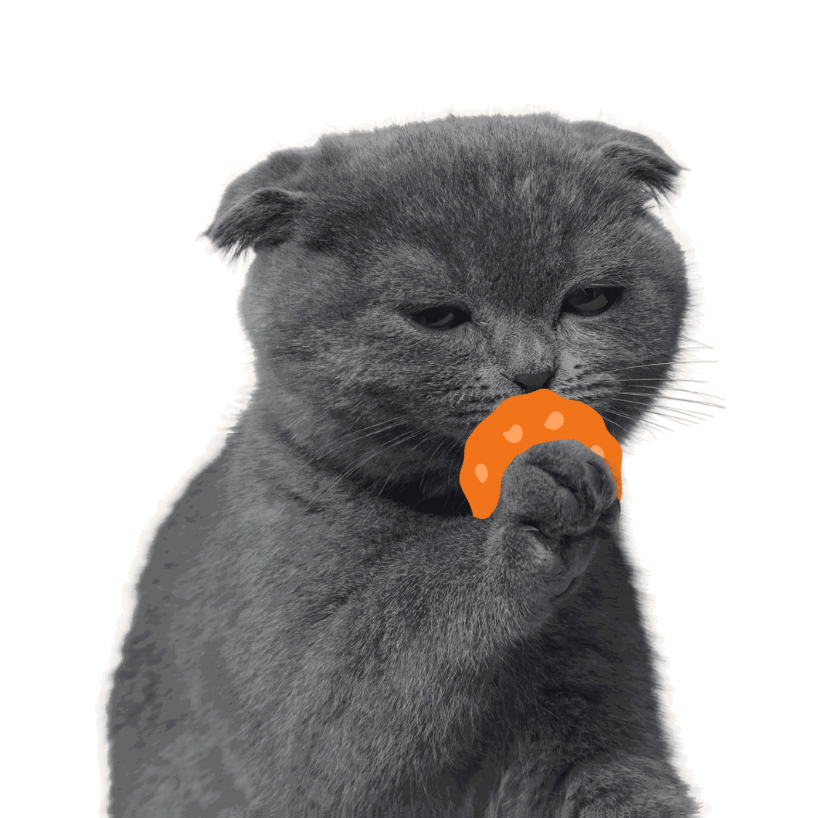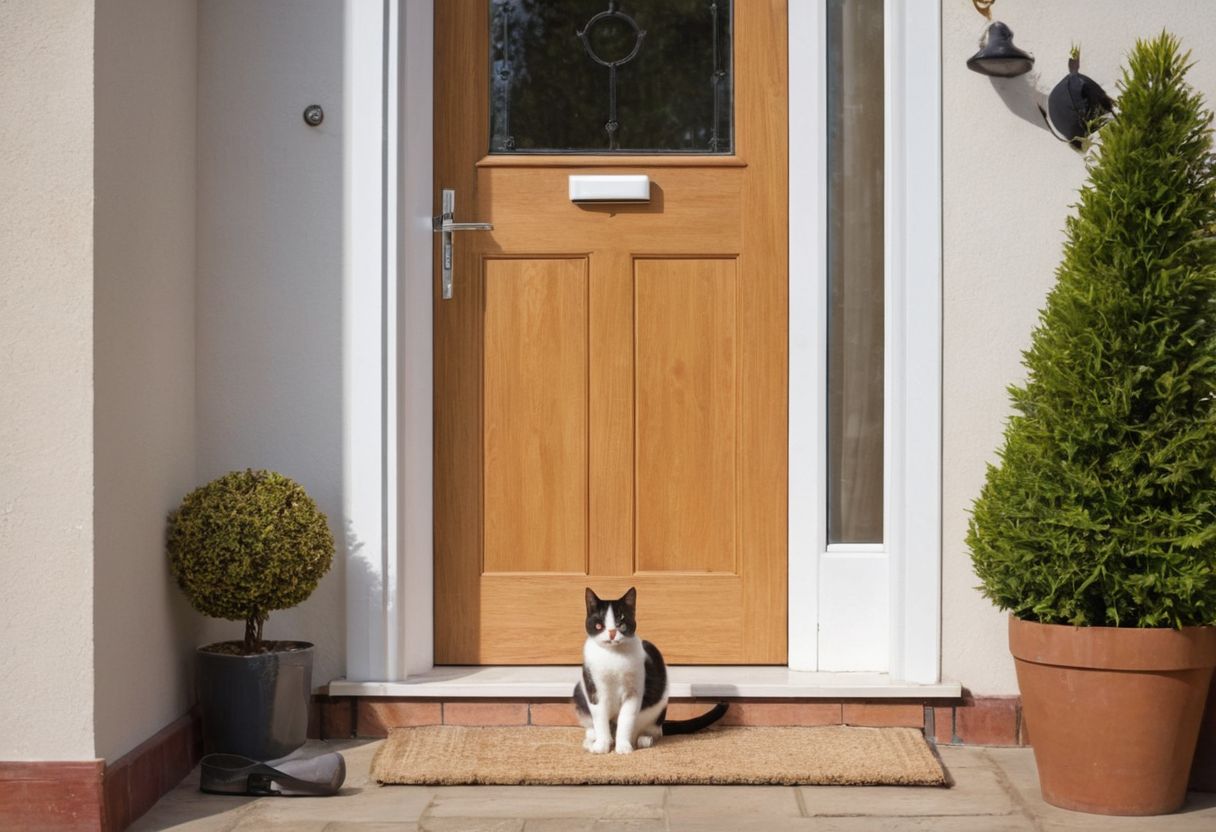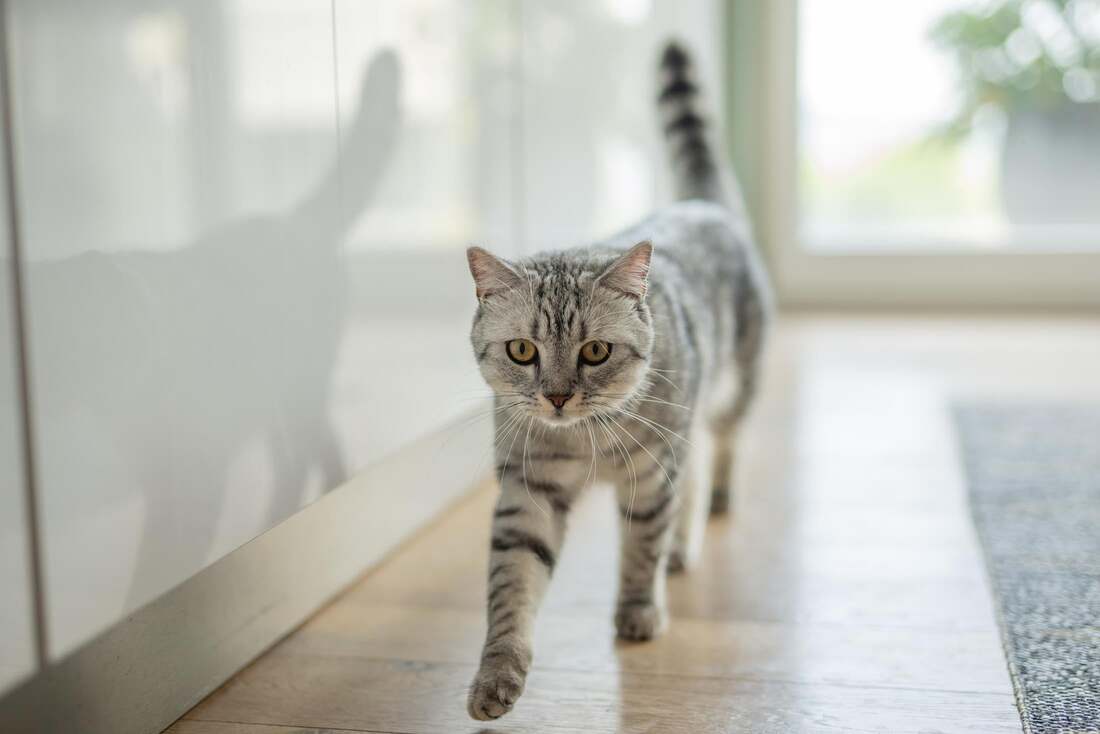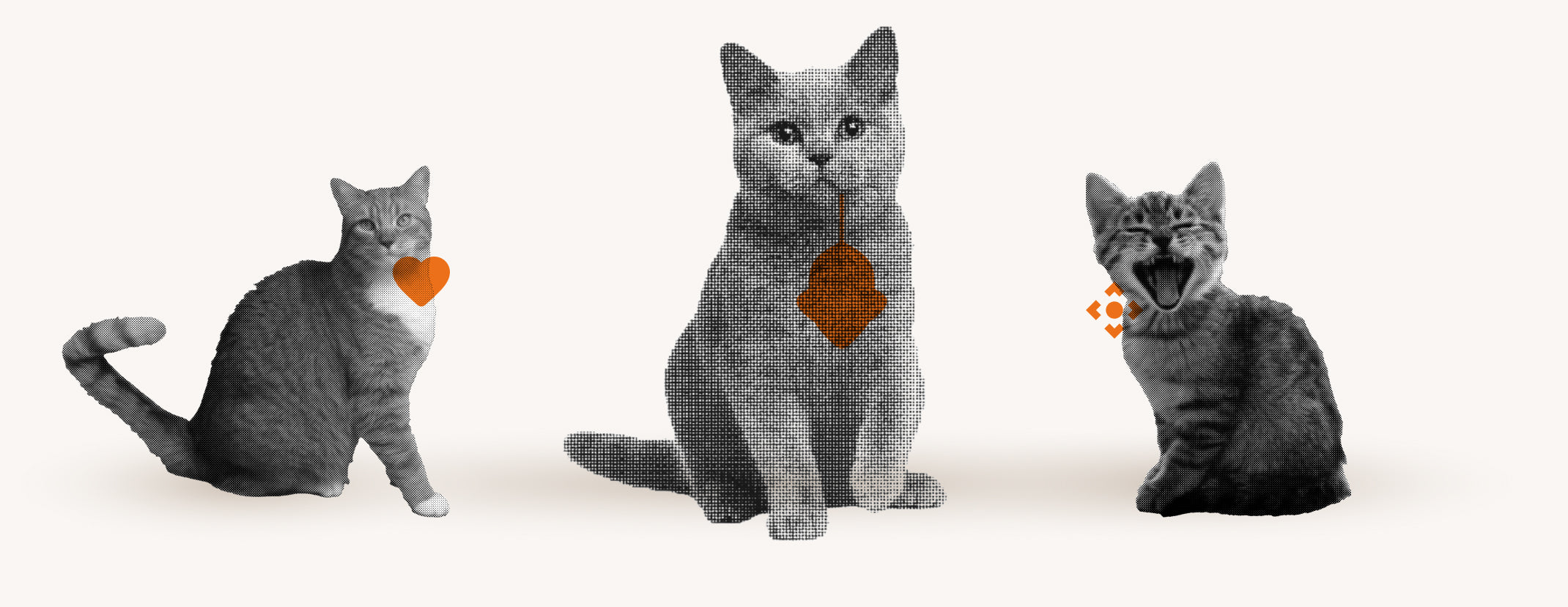Imagine your cat could come and go as it pleased, without you constantly having to run to the door. However, installing a cat flap in the front door often presents a challenge, especially when it comes to choosing materials and ensuring safety.
The ideal cat flap should be airtight, meet high insulation standards, and have automatic opening mechanisms as well as additional insulation options.
This article will tell you everything you need to know about choosing the right materials, installation instructions, and additional features of modern cat flaps that ensure safety and comfort.
Materials for front doors with cat flaps: An overview

When choosing a front door to integrate a cat flap, the materials are crucial. Wood is popular for its natural look but requires regular maintenance. Plastic doors are low-maintenance and offer good insulation, while metal doors are valued for their robustness and security. Each material has specific properties that must be considered when installing a cat flap to ensure both functionality and aesthetics.
Choosing the right material affects not only the durability and security of the front door, but also that of the cat flap. Here are some considerations:
- Wooden doors can be easily modified, which simplifies the installation of a cat flap.
- Plastic and metal doors require special tools and knowledge because they are more difficult to work with.
- When working with glass doors, it is often necessary to consult a specialist to avoid compromising the integrity of the glass.
Choosing the right cat flap: What you should pay attention to
When choosing the right cat flap, you should pay attention to additional features besides size and material. A good cat flap should be large enough for your cat to fit through comfortably, but also secure enough to keep out unwanted intruders. Consider whether features like microchip recognition or a four-way lock are useful, depending on your cat's needs and the specific circumstances of your home.
Features of modern cat flaps: More than just a door

Modern cat flaps offer much more than just a passageway. Many models are equipped with technologies that increase comfort and security. These include:
- Microchip recognition ensures that only your cat has access.
- Time control that allows you to set specific access times.
- App control that allows you to control the cat flap from anywhere.
These features help you to better monitor and control your cat's movements.
The optimal placement of a cat flap in the front door

The optimal placement of a cat flap in your front door is crucial for your cat's safety and comfort. It should be positioned to protect it from the elements while still allowing your cat easy access. Consider which areas of the front door are least exposed to the weather and still allow your cat to come and go freely.
Furthermore, the cat flap should not be installed directly next to locks or other potential points of entry. Security is particularly important here. A good position is often in the lower half of the door, where it is easily accessible for the cat and at the same time ensures sufficient distance from key points of the door.
Cat flaps in the living area: Installation and positioning
When installing a cat flap in your living area, you need to consider several factors. Choose a location that is easily accessible for your cat and also safe. Avoid areas directly exposed to the elements or where the flap could become a nuisance.
The cat flap should be positioned strategically:
- Familiarity: Install it in an area that your cat is already familiar with.
- Protection: Make sure the flap is not in an area exposed to strong sun or rain.
- Security: Avoid positions close to potential points of entry or where the flap could easily be manipulated from the outside.
Instructions for installing a cat flap in the front door
Installing a cat flap in your front door begins with careful planning and choosing the right location. First, mark the spot where the flap will be installed, ideally at a height that allows your cat the most comfortable access. Use a spirit level to ensure the mark is horizontal.
Next, you'll need the right tools and materials: a drill, a jigsaw, screws, and of course, the cat flap itself. Follow these steps :
- First, drill a hole in each corner of the marked area to make sawing easier.
- Then carefully saw along the markings to create the opening for the cat flap.
- Install the cat flap and secure it with the included screws.
Cat flap in a rented apartment: What is allowed?
If you live in a rented apartment and want to install a cat flap, you must first obtain your landlord's permission . Without their consent, you could face legal problems, as installing a cat flap could be considered a structural alteration. It is therefore advisable to seek written permission to avoid future issues.
Furthermore, you should be aware that installing a cat flap may affect your insurance coverage . Burglars could use the cat flap as an entry point, which could lead to problems with your insurance company in the event of a break-in. Therefore, be sure to thoroughly research the risks and discuss them with your insurance provider if necessary.
Burglary protection despite a cat flap: Options and tips
Installing a cat flap doesn't have to mean compromising on security. There are several ways to increase safety without affecting your cat's comfort. One method is using electronic cat flaps that only respond to your cat's microchip signal. These flaps won't open for strangers or unwanted visitors.
Additionally, you can install mechanical security devices to further increase burglary protection. Here are some tips:
- Install bolts or locks that are not accessible from the outside.
- Make sure that the cat flap is mounted at a sufficient distance from door and window handles to minimize the risk of burglars using it as an entry point.
- Consider installing an alarm system that activates if someone tries to use the cat flap without authorization.
Chip-controlled cat flaps: safety and convenience
Chip-controlled cat flaps offer an innovative solution to ensure that only your cat has access to your home. They use RFID technology to read your cat's microchip, which can be in a collar or implanted. This gives you the peace of mind that no other animals or unwanted guests can enter your house through the cat flap.
Besides increased security, these cat flaps also offer a high level of comfort for your pet. Your cat can come and go as it pleases without you having to open the door. Many models also offer:
- Manual locking options to restrict access if needed.
- Easy installation in doors, windows or walls.
- Storage options for multiple cats, in case you have several furry friends.
Safety collars and cat flaps: A safe combination

Security collars play an important role when using microchip-enabled cat flaps. These collars are equipped with a microchip that is recognized by the cat flap. This ensures that only your cat has access to your home. This system offers an effective solution to prevent other animals from entering your house.
The system works incredibly simply: When your cat, wearing the safety collar, approaches the cat flap, the sensor reads the chip and opens the flap. This offers not only security but also convenience for your cat, allowing it to come and go as it pleases without you having to open the door yourself. Many of these systems also come equipped with additional safety features, such as:
- Time control to regulate access at specific times.
- Manual locking options for added security.
Cost of a cat flap: purchase and installation
The cost of a cat flap can vary significantly depending on the model and features. Basic models are available from around €15, while high-tech versions with microchip recognition or app control can cost €200 or more. It's important to compare prices and features before buying to find the best value for your money.
In addition to the purchase price, you also need to consider the installation costs. If you're handy, you can install the cat flap yourself and save money. Otherwise, professional installation can cost between €100 and €400, depending on the complexity and location. It's worth getting quotes from several professionals and comparing them.
Construction of a cat ladder for access to the cat flap
If you have a cat flap in your front door, a cat ladder can make access much easier for your cat. Especially if the door is slightly elevated, a ladder provides your cat with a safe and comfortable way to reach the flap. Building such a ladder isn't difficult and can be done in an afternoon.
Start by planning the size and angle of the staircase. You will need:
- Wooden planks for the steps.
- Screws or nails for fastening.
- Possibly paint or varnish to protect the wood from the elements.
Make sure the steps are non-slip and offer enough space for your cat to climb up and down comfortably.
Discover Flappies smart cat flaps for your home
Imagine how Flappie can solve your worries about unwanted prey in your home with its smart cat flap. Selective access control and prey detection ensure that only your cat, without any prey, can enter. This gives you peace of mind knowing your home stays clean and free of unwanted guests.
If you're ready to make your life and your cat's life easier, visit flappiedoors.com There you can learn more about the advantages of this innovative solution and see firsthand how Flappie can improve your life with your cat. Take control of your home and experience the difference with Flappie .
Frequently Asked Questions
Should you install a cat flap in your front door?
Yes, installing a cat flap in your front door can be very practical, allowing your cat to come and go as it pleases without you constantly having to run to the door. It's important to choose the right materials and the optimal placement to ensure your cat's safety and comfort.
How burglar-proof is a cat flap?
A cat flap can potentially pose a security risk, as burglars could use it as an entry point. To increase security, you can use electronic cat flaps that only respond to your cat's microchip signal, or install additional mechanical security devices such as latches or locks that are inaccessible from the outside.
How much does it cost to have a cat flap installed?
The cost of installing a cat flap can vary. Simple models can be installed by the homeowner, saving money. Professional installations can cost between €100 and €400, depending on the complexity and location. It's advisable to get quotes from several professionals and compare them.
Do cat flaps weaken doors?
Installing a cat flap can compromise the structural integrity of a door, especially if it's a glass door or if the flap is installed near locks or other potential points of entry. It's important to plan the installation carefully and consult a professional if necessary.





Share:
Creative cat flap ideas for every home
Everything about cat flaps with windows: installation and advantages